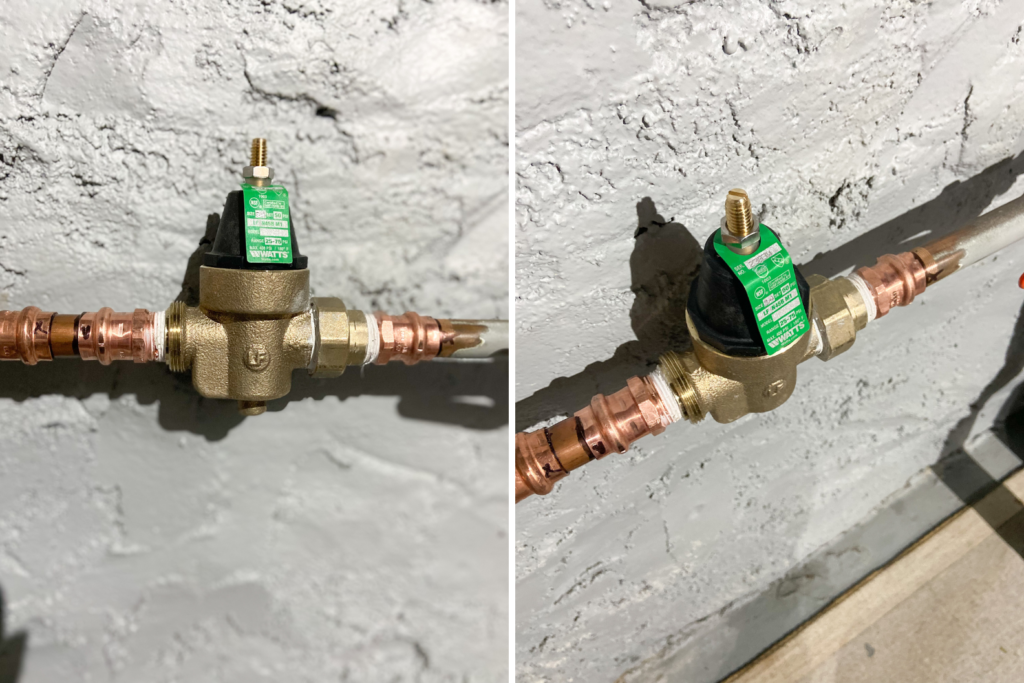When it comes to understanding your home’s plumbing system, having some general knowledge of the various components is always going to be helpful! Even though plumbing likely isn’t something you think of very often, knowing the in’s and out’s of the various pieces can help in preventing small plumbing problems from becoming major ones. If you’ve followed any of our previous blog posts, you likely already know that we like to cover a wide variety of plumbing-related topics. No matter if it be on the residential or commercial side of things, it’s important to acknowledge that your plumbing system is composed of quite a few different things and as a homeowner or facility manager, you’ll want to stay on top of items such as maintenance tasks, making repairs in a timely manner and so on.
While most people are going to likely be fairly familiar with the main plumbing pieces (like water heaters, faucets, toilets, showerheads and so on), knowing some information about the smaller components that keep these items in working order will be worthwhile. In this week’s blog post, we’re going to take a look at some of these plumbing components that you might not hear mentioned very often despite them serving an important purpose in the grand scheme of things.
Do you live in or near the Kansas City area and need help with a plumbing project? Our team at Stine-Nichols Plumbing has years of experience providing plumbing services all around Kansas City. If you’re interested in speaking with a member of our team or requesting a free estimate, don’t hesitate to give us a call at (816) 348-3481.
Thermal Expansion Tank
Since the water heater is an invaluable plumbing component for both residential houses and commercial facilities, we’ll start with a safety feature that is a MUST. When water is heated, it expands (also known as thermal expansion). As you can likely guess, when this happens inside a water heater storage tank, there is limited volume available. No surprises there! If this added-volume has nowhere else to go, it will add unnecessary pressure to the water heater and eventually result in some issues. That’s where your thermal expansion tank comes into play. It is installed to take on this extra pressure and ensure your water heater tank can continue to operate like normal. If you look at the piping above your water heater, you should see this smaller tank connected to the cold water line entering your primary water heater tank.
Long story short, when having a new water heater installed, homeowners are looking for something that works, can continue working throughout the expected lifespan of a water heater, and lastly is able to operate in a safe manner. There will be some maintenance required along the way to ensure this happens, but when it comes to safety, a properly-functioning expansion tank is a definite need!
Pressure-Reducing Valve
Our next important plumbing piece that we’ll discuss is called a pressure-reducing valve, which is also commonly referred to as a PRV or even a pressure-relief valve. With this integral component, its name really gives away its main purpose. It is designed to protect your plumbing system from issues caused by high water pressure. As such, it is yet another example of a plumbing component that’s largely utilized as a safety feature. You’ll notice there are several different components designed for safety installed throughout one’s plumbing system.
In order to understand why a PRV is so important, you’ll need to know how high water pressure can present some troublesome situations. The best way to word this is by saying that your plumbing system is simply not equipped to handle these excessive levels of pressure. We just mentioned above how a thermal expansion tank is installed to take on the extra volume when water is heated and prevent this added-pressure from being absorbed by the main water heater tank. In the end, no matter if it be your faucets, pipes or even your appliances, an increased level of pressure can wreak havoc in more ways than one. A PRV will help reduce this pressure before it’s able to do so!
Faucet Aerator
A frequent topic of discussion on many of our previous blog posts are faucets. Whether it be evaluating the different faucet brands, knowing the finish options to pick from or anything else, there are more than a few faucet options to pick from nowadays! Having said that, faucets are undoubtedly a plumbing fixture that receives its fair share of wear and tear throughout the year (especially in commercial settings). Another underlying factor that can create issues for your faucets is hard water, which happens to be present here in Kansas City (hence the popularity of water softener systems). Nonetheless, we’re discussing that here because hard water can be the cause of mineral deposits clogging up your faucet aerator and seemingly make you think there are possibly even water pressure issues. This is why it’s important to add “cleaning your faucets’ aerators” to your routine plumbing maintenance to-do list!
Aside from making sure this sediment build-up is cleaned out, what else should homeowners know about the purpose of faucet aerators? The answer to that question is actually pretty straightforward! Take a look at the ends of any of your home’s faucets. Do you see a screen-like piece that’s attached to the end? That is your aerator! It will control the flow of the water out of your faucet to ensure a steady flow. Referencing the paragraph above, when mineral deposits start to clog up this screen, it can restrict the amount of water coming out of the faucet.
Sewer Clean-Out
Thus far in this blog post, we’ve discussed the thermal expansion tank (which relates to your water heater), PRV’s (which relates to water pressure as a whole) and aerators (which relates to your faucets). Next on our list is something that’s important for alleviating issues tied to your sewer line. As you can likely imagine, issues with your sewer line can present a bevy of issues and considering it’s installed underground, it can be a challenge to notice when something isn’t right. Your sewer clean-out provides plumbers with easy access to clear blockages when they pop-up. The clean-out can also be used as a starting point if you need to have a camera run through your sewer line. As we’ve mentioned on previous blog posts, a sewer line camera inspection is an efficient way to get eyes on what exactly is going on inside of your sewer line. It can also allow plumbing professionals to have the ability to locate where an issue resides in the line and make a plan for getting it resolved. Long story short, a clean-out is an integral plumbing component due to the ease of access that it provides plumbers when working with sewer lines!
Expert Plumbing Solutions in KC
We hope you learned a thing or two about the various plumbing components discussed in this blog post. Each of these serves a unique purpose in your plumbing system and as such, it doesn’t hurt to have a general understanding of their role. Here at Stine-Nichols Plumbing, we provide residential, commercial and new construction plumbing services throughout the Kansas City area. Over the years, we’ve had the opportunity to work with homeowners and businesses throughout KC with their plumbing needs.
If you’re ever in need of an estimate for a plumbing project, we would be more than happy to do just that! To speak with a member of our team, feel free to fill out the form linked HERE and we’ll be in touch. Thank you for checking out this week’s blog post!


